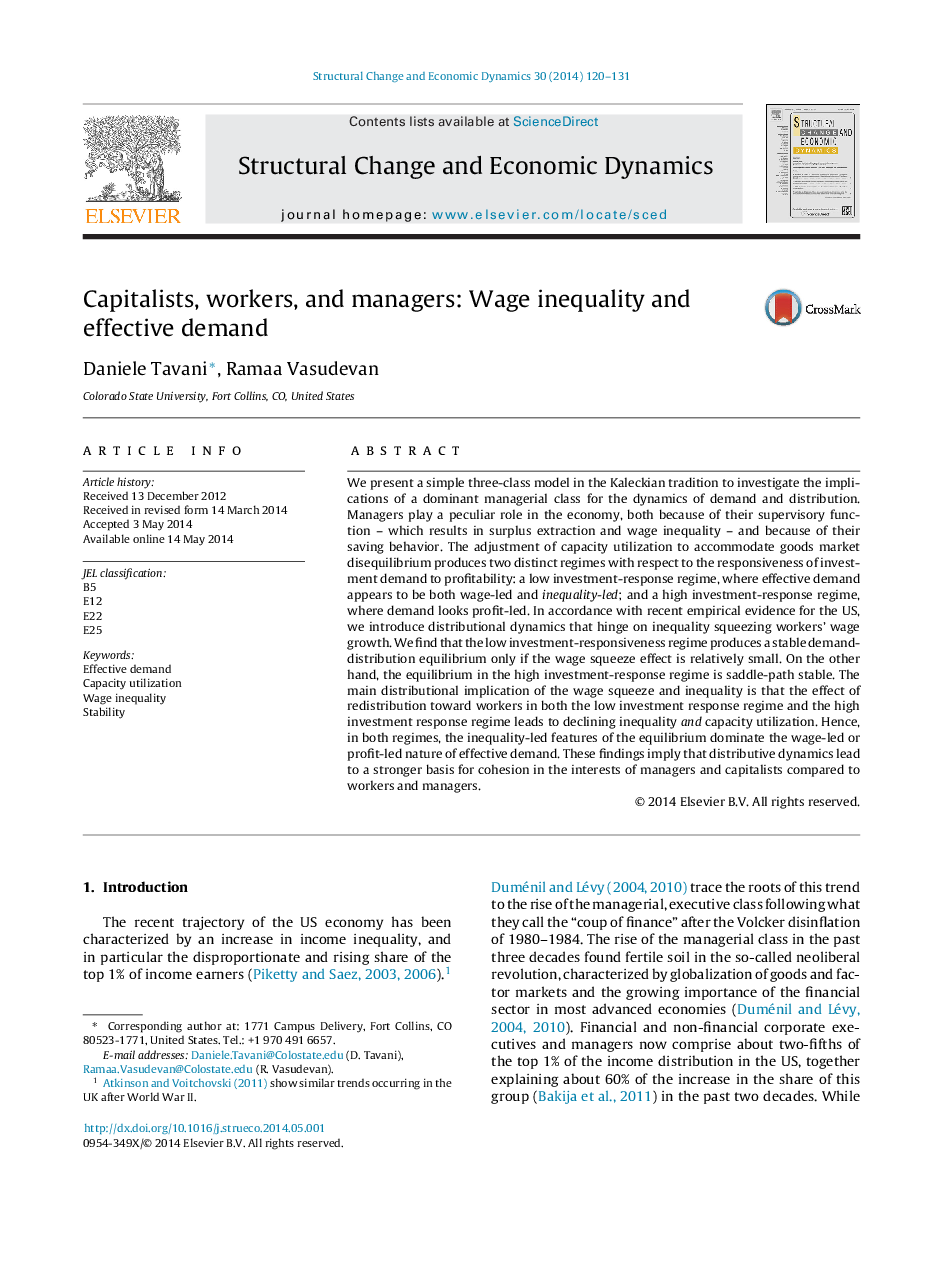| کد مقاله | کد نشریه | سال انتشار | مقاله انگلیسی | نسخه تمام متن |
|---|---|---|---|---|
| 988547 | 1481031 | 2014 | 12 صفحه PDF | دانلود رایگان |
• We study the role of a dominant managerial class and wage inequality in a Kaleckian-type model of demand and distribution dynamics.
• Managers’ supervisory role in production results in surplus extraction and wage inequality.
• Effective demand (capacity utilization) adjustment depends on the responsiveness of investment to profitability.
• If responsiveness is high, demand looks both wage-led and inequality-led. If responsiveness is low, demand looks profit-led.
• If wage inequality compresses workers’ wages over time, a redistribution toward workers reduces both utilization and inequality.
We present a simple three-class model in the Kaleckian tradition to investigate the implications of a dominant managerial class for the dynamics of demand and distribution. Managers play a peculiar role in the economy, both because of their supervisory function – which results in surplus extraction and wage inequality – and because of their saving behavior. The adjustment of capacity utilization to accommodate goods market disequilibrium produces two distinct regimes with respect to the responsiveness of investment demand to profitability: a low investment-response regime, where effective demand appears to be both wage-led and inequality-led; and a high investment-response regime, where demand looks profit-led. In accordance with recent empirical evidence for the US, we introduce distributional dynamics that hinge on inequality squeezing workers’ wage growth. We find that the low investment-responsiveness regime produces a stable demand-distribution equilibrium only if the wage squeeze effect is relatively small. On the other hand, the equilibrium in the high investment-response regime is saddle-path stable. The main distributional implication of the wage squeeze and inequality is that the effect of redistribution toward workers in both the low investment response regime and the high investment response regime leads to declining inequality and capacity utilization. Hence, in both regimes, the inequality-led features of the equilibrium dominate the wage-led or profit-led nature of effective demand. These findings imply that distributive dynamics lead to a stronger basis for cohesion in the interests of managers and capitalists compared to workers and managers.
Journal: Structural Change and Economic Dynamics - Volume 30, September 2014, Pages 120–131
